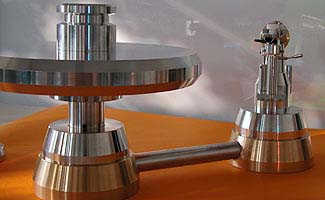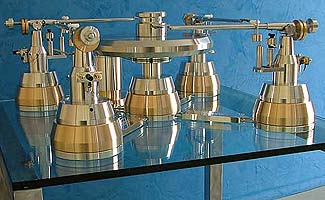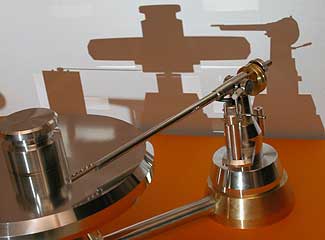suspended
rigid - high weight

This record player (over 30 kg in weight) is uncoupled at several points:
- Beneath the base
- Beneath the turntable
- Beneath the pin, using a magnetic field calibrated and controlled with great care.
This air bearing supporting the pin replaces the thrust-block bearing and eliminates the natural noise of the thrust-block bearing, noise which reduces the performance levels of the record player, especially record players which use heavy turntables, thereby reducing the benefits of this type of record player.
The special shape of this record player and the materials used have the objective of reducing the physical phenomena caused by unwanted resonance. It was decided to reduce and, if possible, eliminate the base, which in almost all record players currently available has a large surface area and is often the cause of high resonance which has a very negative effect on the sound quality of the record player.
All the parts of this record player, the structural parts as well as the minor parts, are extremely precise and have been manufactured using the most effective materials in their field.


The motor is monitored by two electronic cards: the first card controls the speed electronically using a quartz which stabilises the frequency of the mains power supply while the second card reduces the motor vibrations by means of electrical adjustment of the phases of the motor itself.
Technical literature
TYPE: Magnetic levitation (self lubricating brass bearings)
TRANSMISSION: Belt
THRUST-BLOCK: Magnetic levitation with absolutely no friction or noise, no wear and tear over time